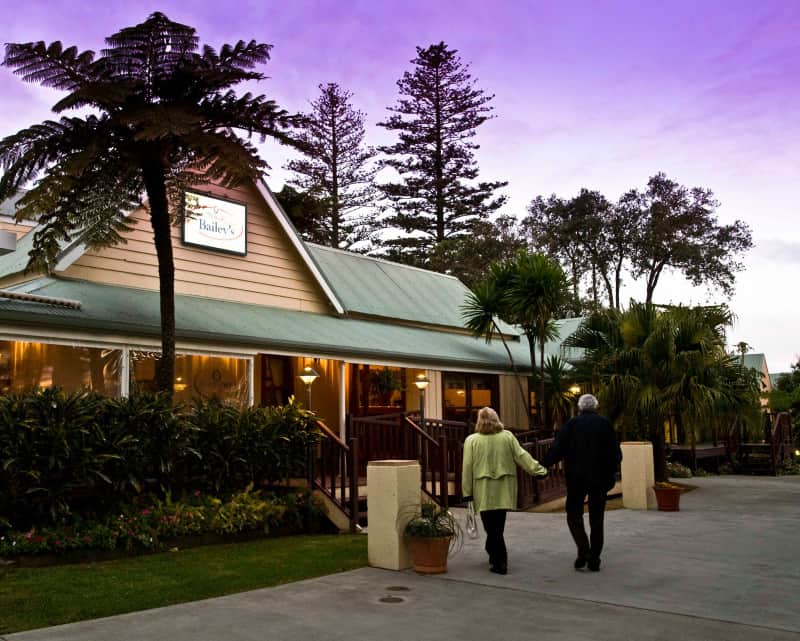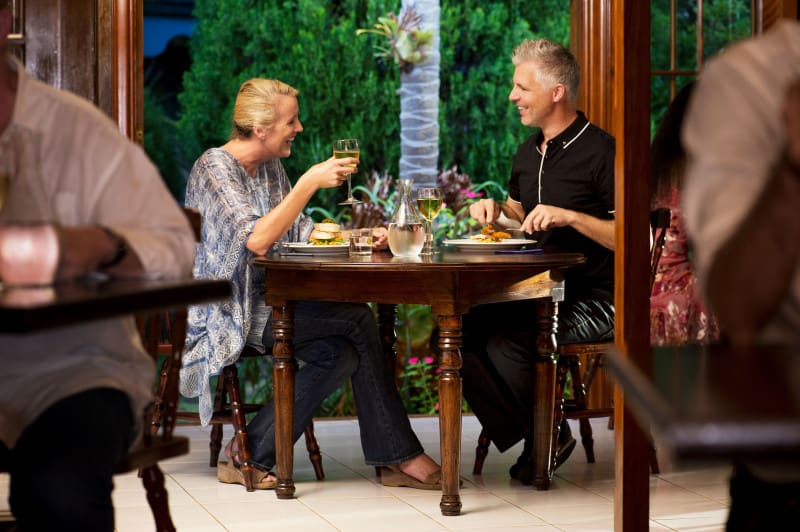All Things Norfolk
History of Norfolk Island
First Settlement
Norfolk Island is a volcanic atoll with a mild sub-tropical climate. It rises up out of the ocean on rugged cliffs to an undulating plateau culminating with Mt Pitt and Mt Bates. Originally covered in lush rain forest dominated by the famous indigenous Norfolk Pine tree the island is now predominantly a rural environment although large national reserves and beautiful parks remain. The island was initially inhabited by a Polynesian settlement prior to 1788, the only site in Australia to do so, which adds to the significance of the island.
Second Settlement
On the 10th of October 1774 Captain James Cook discovered this fertile land and named it after the Duchess of Norfolk. This was the beginning of three new settlement eras for the island. On Captain Cook’s recommendation that the pines would make good masts and the flax utilised, a British settlement was established in 1788 as an extension of the First Fleeters settlement in Sydney Cove, New South Wales. It was soon discovered that the pines and flax were unsuitable and the settlement was deliberately abandoned in 1814. On departure this free settlers colony was razed to prevent other nations from laying claim to the island.
Third Settlement
The island was resettled in 1825 by another British colony as a penal institution for convicts who had originally been transported from Britain, however the focus later became repeat offenders from both Sydney and Van Diemen’s Land. It became a living hell known for its regime of terrible punishment, appalling conditions, and cruel, sadistic treatment by a number of the Commandants. It closed down with the transportation of all convicts to Van Diemen’s Land in 1855 leaving just a small group as caretakers of the island.
Fourth Settlement
June the 8th, 1856 heralded the arrival of the entire community of Pitcairners to begin a new life on Norfolk Island. They were the descendants of the Bounty mutineers and their Tahitian wives who had settled on Pitcairn Island, but after some 70 years had outgrown their little island home. The Pitcairn settlers initially lived in the abandoned buildings of Kingston’s convict ruins while they quarried the jail and many other prison structures as foundation building material for new homes on new land grants.
The restoration programme of the Kingston and Arthurs Vale Historic Area (KAVHA) of the 1960’s through 1970’s has preserved one of the best groups of Georgian architectural buildings and is today utilised by the greater community of Norfolk Island for public offices, recreational pursuits and tourism activities. The ongoing conservation of World Heritage Listed KAVHA presents a wonderful opportunity for all who visit the island to experience the Second Penal settlement in the 1800’s.
There have been many milestones since, with memorable moments including a land grant that was made in 1866 to establish a training school and headquarters for the Bishop of Melanesia. By 1899 the Mission had 210 scholars, had built the Mission Chapel, homes for the missionaries & pupils, workshops, a printing house and a store. The Mission was wound up after WWI.
It is also noteworthy that the airfield was constructed during WWII (1942-43) improving the island’s accessibility considerably, and the island’s tourism sector benefits greatly from this today.
Norfolk Island remains a jewel in the South Pacific with such diverse histories and experiences that you’ll be captivated and never want to leave.

History of Governor’s Lodge
The property also has an interesting history.
Governors Lodge sits on land that was once part of an original 50 acre grant made to James Dawe, a flour miller, soon after the arrival of the Pitcairners in 1856. The land grant stretched from Taylors Road to Middlegate (near the school)
Charles Christian, grandson of Fletcher Christian, purchased the land from Dawe when he departed the Island and Charles then passed the land onto Emily, one of his 16 children. Emily married George Bailey who came to Norfolk Island in the 1860’s to work for the Melanesian Mission. This was one of the first marriages between the Pitcairners and an “outsider” and it resulted in 6 children. The land was subdivided and seven lots were given to four of Emily’s children. This particular lot was given to her eldest son Herbert.
Herbert & his wife Clara Bailey built their family homestead ‘Elouera’ in the early 1900’s. The home remained in the family & for many years was the home of Herbert & Clara’s son David Bailey, the local Postmaster. When David died in 1980 the house was sold, and the construction of Governor’s Lodge commenced in 2001. During the construction phase it was decided that the homestead would be restored to serve as Baileys Restaurant, in honour of the Bailey family history. This charming restaurant has original pit sawn ceilings, and a verandah constructed from limestone removed from the old jail at Kingston.
In 2020 Governors Lodge was purchased by Mathew Christian-Bailey, the great nephew of Dave Bailey. The property is special to Mathew as he has fond memories of visiting ‘Uncle Dave’ and riding his horse on the land where the cabins now reside. He is proud to have the land back in the family name.

Events
On Norfolk Island we celebrate events such as Anzac Day, Easter and Christmas, but we also have some unique traditions. In November we celebrate Thanksgiving Day as a legacy of the American whalers who frequently visited the island in the 1800's. We also celebrate Bounty Day in June, in memory of the arrival of the Bounty Mutineers to the island.
Nearby Attractions
Our central location at Governor’s Lodge makes us an ideal base for your time exploring the island.
Kingston and Arthurs Vale Historic Area – 2.7km away
KAHVA was included in the World Heritage List in 2010 as part of the Australian Convict Sites inscription. The 250 hectare site comprises of buildings and ruins from the Penal Convict Settlement (1824-1855), the Colonial Convict Settlement (1788-1814), as well as the Polynesian settlement dating back even further.

Bounty Folk Museum – 850m away
Showcasing the four settlements of Norfolk Island, the Bounty Folk Mueseum is located opposite the school. Learn more of the island’s history and culture here at a self-directed pace.
Emily Bay – 3.4km away
Located within the World Heritage Area, this sheltered reefed lagoon is crystal clear and safe for swimming, and was even announced as one of Australia’s Top 10 Beaches in the 2017 TripAdvisor Awards.
Fletcher’s Mutiny Cyclorama – 100m away
This amazing 360 degree painting is a constant marvel to visitors. Offering a unique experience while letting guests discover how the world’s most famous mutiny created the Norfolk Island community, this 3D artwork creates an incredibly realistic viewpoint for visitors. Located within a complex that is also home to Gallery Guava and Hilli’s Restaurant
Shopping – 1.3km away
The township on Norfolk Island is home to boutique clothing stores, jewellery shops, souvenirs, weekend markets and a while lot more. All of this is a short, flat walk from the gates of Governors.
Restaurants and Cafés
As a destination Norfolk Island is a locavore’s delight, with a paddock to plate coming naturally to an island that produces much of it’s own food. Burnt Pine township is home to many delightful cafés and restaurants.

